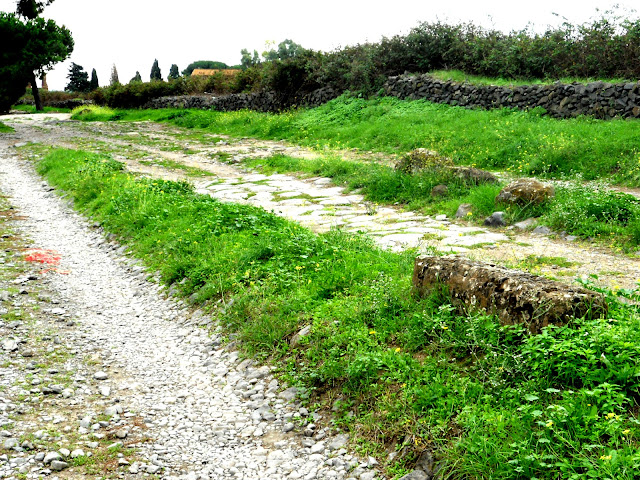 |
| Source: http://en.wikipedia.org/wiki/File:Roman_Empire_125.png |
Genius Loci is a Roman concept that that has been adapted to various contemporary disciplines such as art, architecture and landscape design. It literally translates as "the protective spirit of a place". Many books and articles have been written on the concept. The Environmental and Architectural Phenomenology Newsletter has some very good articles on the subject. My goal was to find places that were so steeped in history that even with the absence of a typical monument (house, tomb, castle, coliseum, etc..) I would still feel a connection to it's history. My intention was to use this research as the catalyst for my next body of work.
With this information in hand, my journey began. As I continued to research and search for the Ancient Roman Roads from the states, I simultaneously began to collect and study the 1800's maps of Vermont near where my summer studio is located. By overlaying these old maps on top of modern maps and Google Earth images, as well as studying archival photographs of the area I found I could locate cellar holes, lost roads and the locations of long gone buildings. Once I felt I had the location identified I would set out on my mountain bike to find and photograph these spots.
Below is a map that identified many of the early homesteads in the area, as well as the path of the railroad and the locations of the stations and flagstops.
This photo below shows the current landscape.
 |
| The above panorama is a rest stop on one of my excursions. |
Here is what remains of the station.
On the left below is a photograph of a flag stop active in the late 1800's. The photo on the right shows the current site, identified by the large bolder behind station.
The photograph below is a cellar hole near Etna, NH that I was led to by 2 friends. Throughout the woods surrounding the foundation we found several other foundations, probably barns, 2 wells and several stone walls that were animal pens and pastures. This must have been a stately homestead in it's day.
Though my final goal was to generate a body of digital drawings, while still in Vermont, I experimented with various traditional drawing techniques that I hoped would capture the essence of both the process and the visceral quality of these journeys.


























































